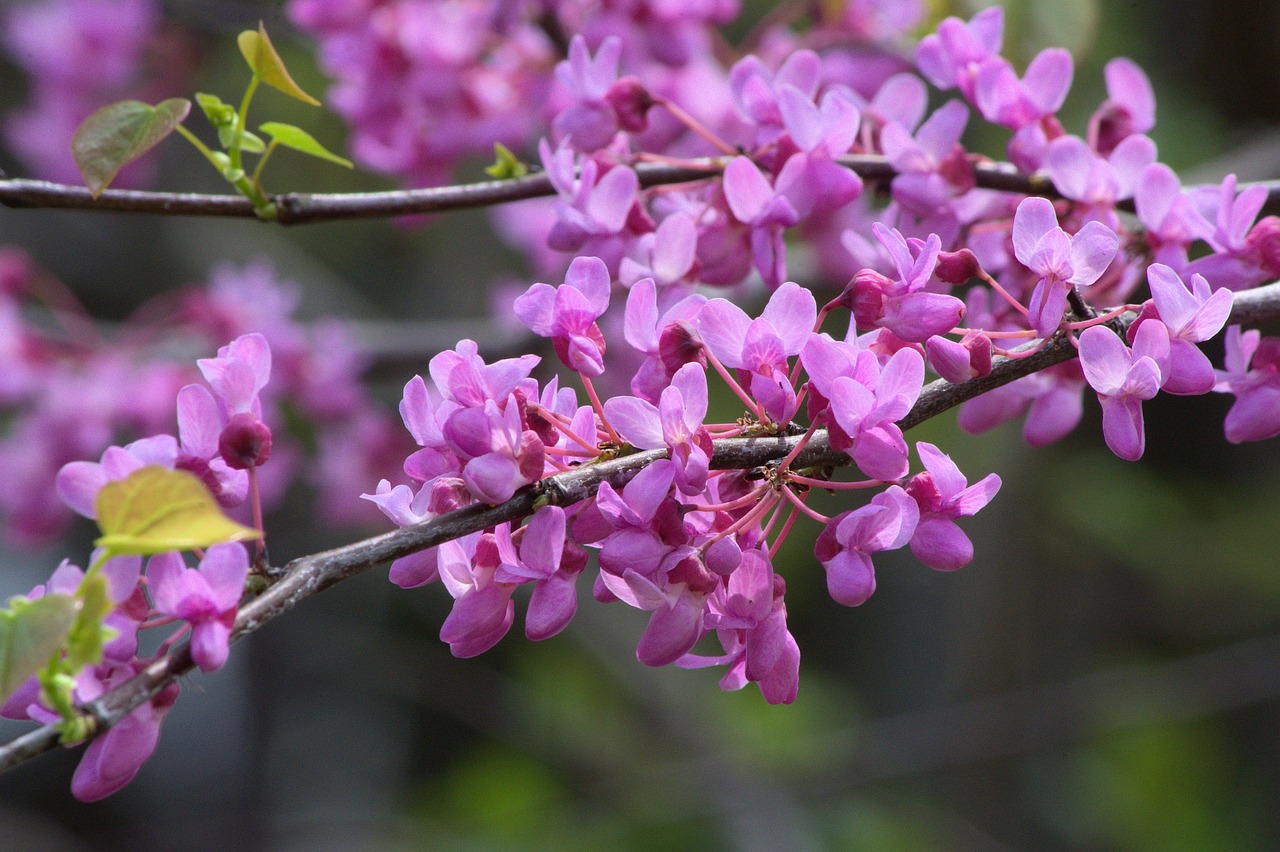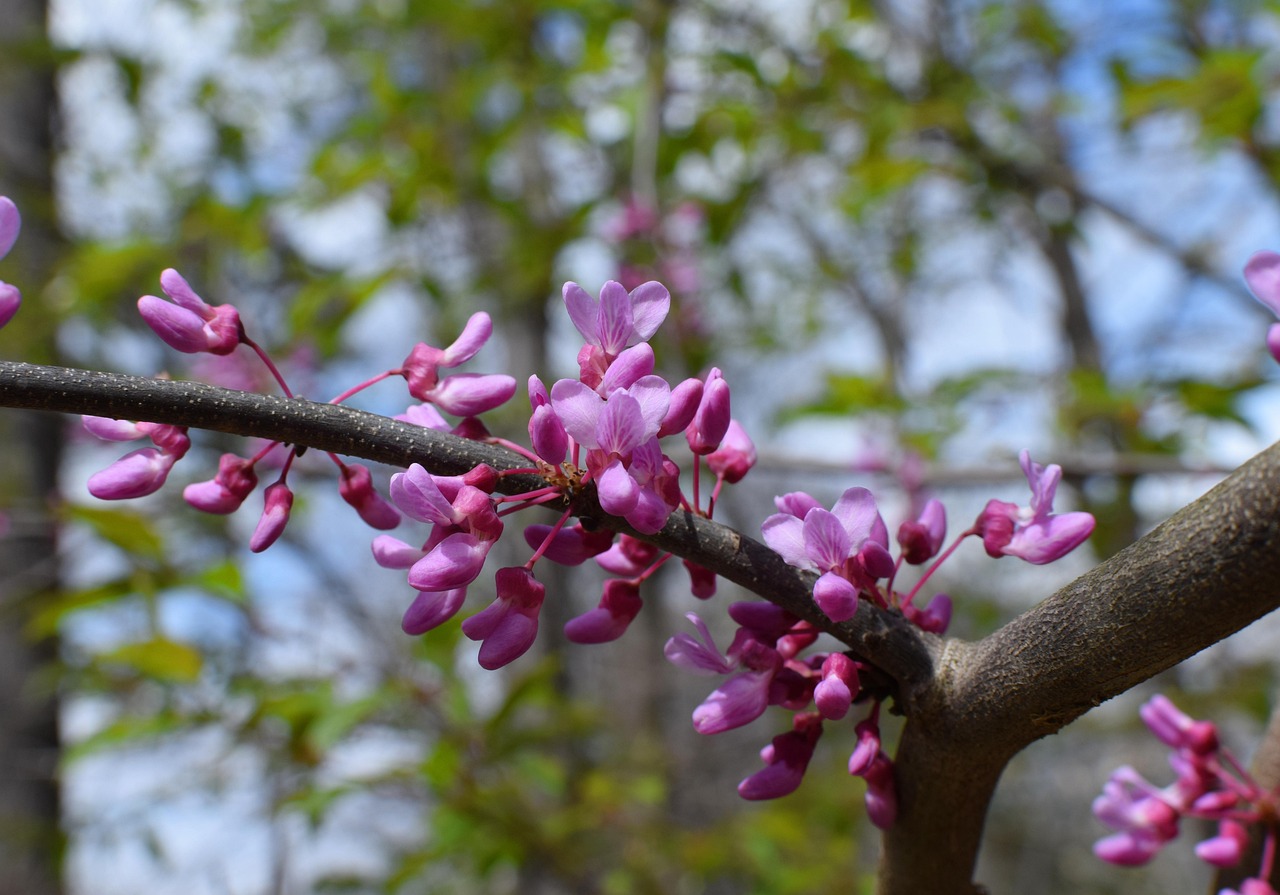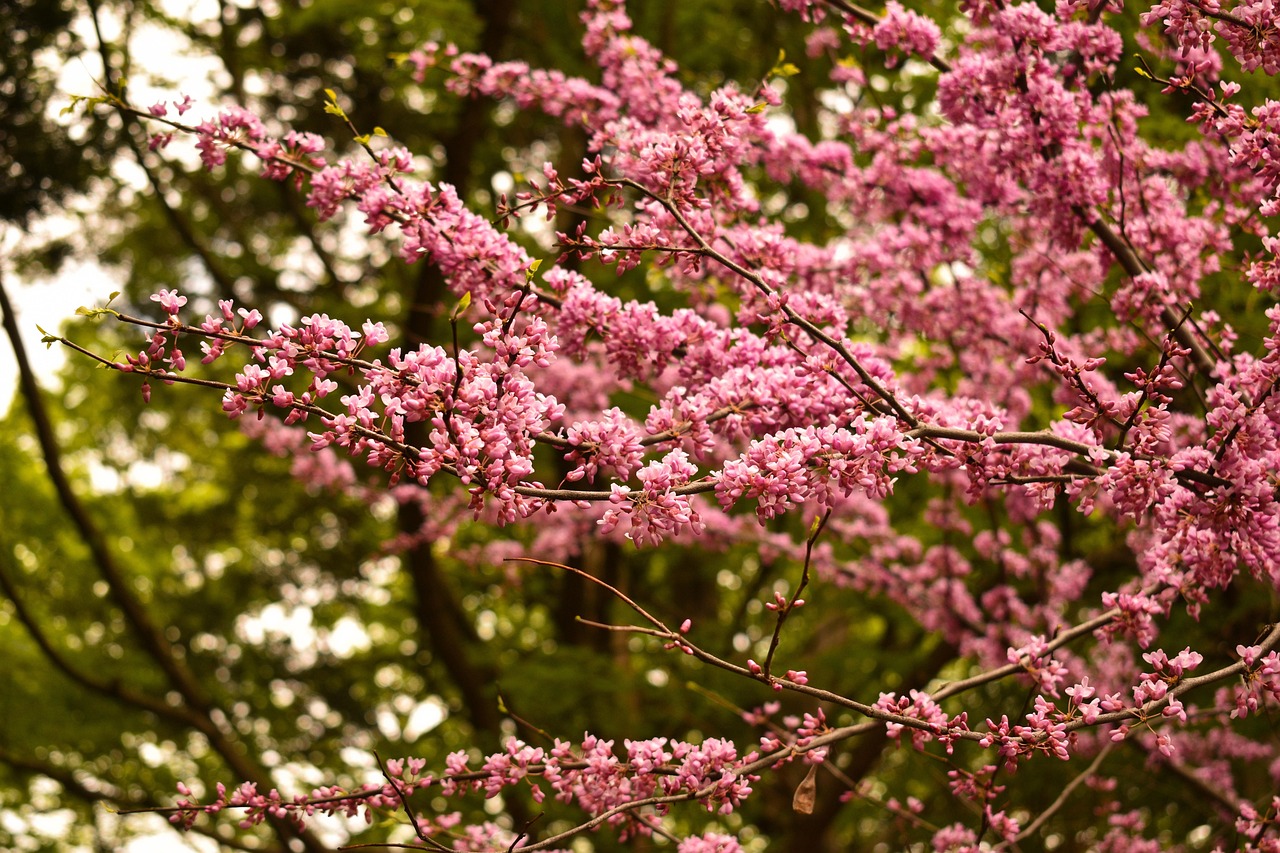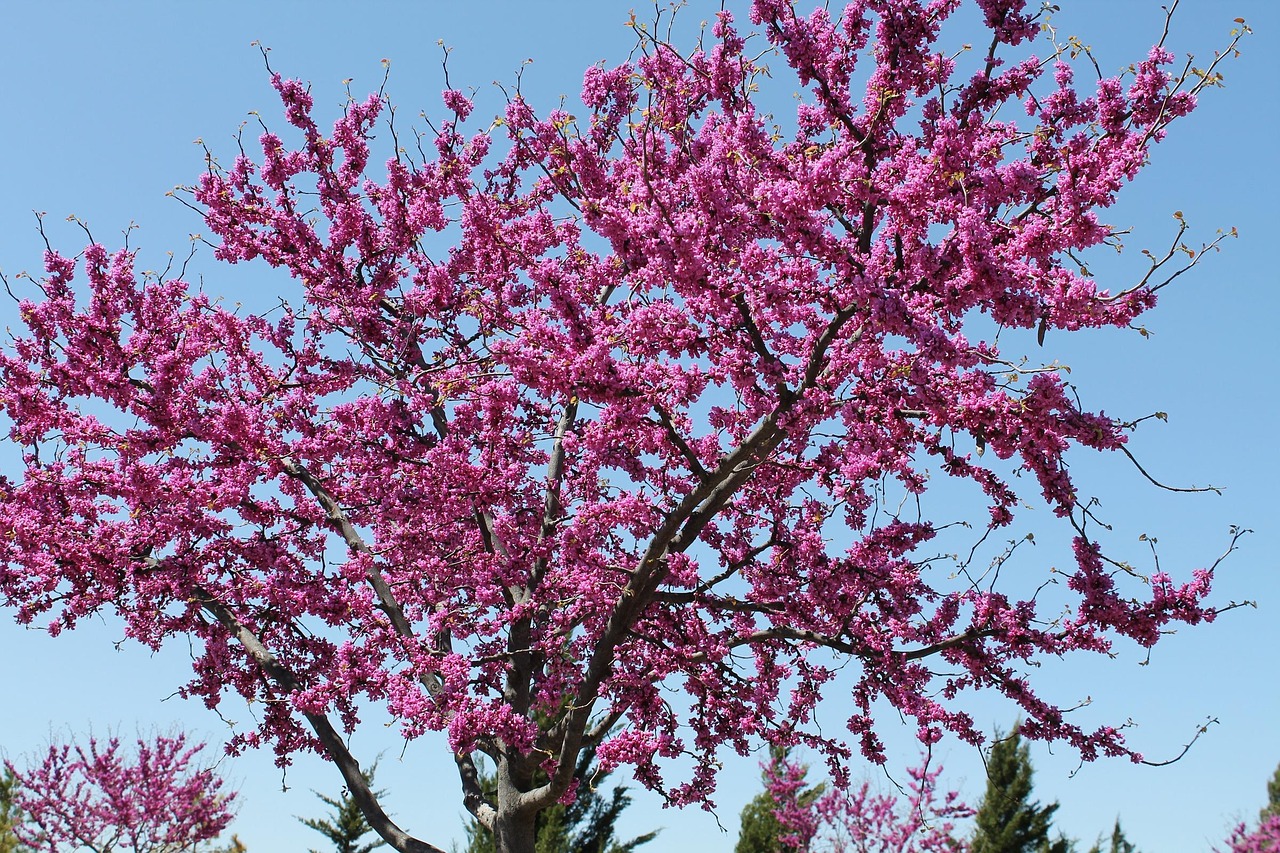The Eastern Redbud tree (Cercis canadensis) exhibits a moderate growth rate, typically reaching 12 to 30 inches per year during its early years. This growth is especially noticeable in spring when it bursts into vibrant flower displays, attracting attention and pollinators alike.
The Eastern Redbud is a native deciduous tree commonly found in the eastern United States. It is loved for its stunning pink or purple flowers that bloom in early spring. These flowers emerge before the leaves, creating a spectacular display that captivates many gardeners and nature enthusiasts. The tree is not only beautiful but also plays an important role in local ecosystems by providing food for various pollinators such as bees and butterflies.

Understanding the growth rate of the Eastern Redbud is essential for anyone considering planting this tree. Factors such as soil quality, sunlight, and water availability can significantly influence its growth. The Eastern Redbud thrives in well-drained soils and can adapt to different soil types, although it prefers loamy conditions rich in organic matter. Adequate sunlight is crucial, as these trees typically flourish best with full sun to partial shade.
Growth Rate Overview
When discussing the growth rate of the Eastern Redbud, several factors come into play. These include environmental conditions, tree age, and care practices. Below is a table that highlights the average growth rates of Eastern Redbuds based on their age:
| Tree Age | Average Growth Rate (inches/year) |
|---|---|
| 1-3 years | 12-30 |
| 4-6 years | 10-20 |
| 7-10 years | 8-15 |
| 11+ years | 5-10 |
The Eastern Redbud reaches its most vigorous growth during the initial years, particularly in the spring. In ideal conditions, this tree can add substantial height and width to its structure as it establishes itself. However, as the tree matures, its growth rate slows down significantly. This gradual decline is common among many tree species and is an important consideration for long-term landscaping plans.

The blooming period of the Eastern Redbud also correlates with its growth cycle. In spring, as temperatures rise and daylight increases, the tree prepares for new growth by developing buds that will soon burst into flowers. This process not only enhances the aesthetic appeal of gardens but also indicates the health and vitality of the tree.
In addition to its growth rate, it is important to consider how to care for an Eastern Redbud to maximize its potential. Proper watering, mulching, and pruning techniques can promote healthy growth and flowering. During the first few years, adequate watering is essential to help establish a robust root system. Once established, these trees are relatively drought-tolerant but will benefit from regular moisture during dry spells.
Mulching around the base of the tree can help retain soil moisture and suppress weeds. It is important to keep mulch away from the trunk to prevent rot and pests. Pruning should be minimal during the early years; however, shaping the tree can enhance air circulation and sunlight penetration, both of which are crucial for overall health.

The spring flower displays of the Eastern Redbud not only provide beauty but also serve ecological purposes. The blooms attract various pollinators essential for biodiversity. The early flowering of the Eastern Redbud provides an important food source for bees just coming out of hibernation. This makes it a valuable addition to any garden aiming to support local wildlife.
As we explore further into the seasonal changes and care requirements of the Eastern Redbud, understanding the dynamics of its growth rate will help gardeners create a thriving environment for this beautiful tree.
Factors Affecting Growth Rate
The growth rate of the Eastern Redbud tree can be influenced by several environmental and care-related factors. Understanding these elements is key to promoting healthy growth and vibrant spring displays. Below are some of the primary factors that affect the growth of the Eastern Redbud.

Soil Quality
Soil is one of the most critical factors impacting the growth rate of Eastern Redbuds. The tree prefers well-drained, loamy soil enriched with organic matter. Here are some characteristics of ideal soil conditions:
- Drainage: Good drainage is essential to prevent root rot.
- pH Level: Eastern Redbuds thrive in slightly acidic to neutral pH levels (6.0 to 7.0).
- Nutrient Content: Rich organic matter promotes better growth.
Sunlight Exposure
Sunlight also plays a significant role in the growth rate of the Eastern Redbud. While this tree can tolerate partial shade, it flourishes best in full sun. Here are some key points:
- Full Sun: A minimum of 6 hours of direct sunlight each day is ideal for optimal growth.
- Partial Shade: In areas with high temperatures, some afternoon shade can help prevent leaf scorch.
Watering Practices
Proper watering is essential for establishing a healthy Eastern Redbud. Here are some watering tips to consider:
- Initial Establishment: Newly planted trees require consistent moisture for the first few years.
- Drought Tolerance: Once established, these trees can endure short periods of drought.
- Watering Technique: Deep watering encourages strong root development; avoid shallow watering.
Seasonal Growth Patterns
The Eastern Redbud exhibits distinct seasonal growth patterns that coincide with its flowering and overall health. These patterns provide insight into the best times for care and maintenance.
Spring Growth and Flowering
In spring, the Eastern Redbud showcases its most vibrant display. As temperatures rise, buds break, leading to an explosion of flowers. This growth phase is crucial for both aesthetic appeal and ecological contributions. Key features include:
- Budding: Buds typically begin to swell as early as late March in warmer climates.
- Flowering: The dazzling pink or purple blooms appear from April to May, attracting various pollinators.
- Leaf Emergence: Leaves unfurl shortly after flowering, creating a lush canopy.
Summer Growth Phase
During summer, the tree focuses on leaf development and overall growth. Here are some aspects to note:
- Growth Rate: The Eastern Redbud continues to grow, albeit at a slower pace compared to spring.
- Water Needs: Regular watering during hot months is essential for maintaining health.
- Pest Monitoring: This season is also critical for checking for pests and diseases.
Autumn Preparation
As autumn approaches, the Eastern Redbud begins to prepare for dormancy. The leaves transition from green to vibrant hues of yellow and orange. Important considerations during this phase include:
- Leaf Drop: The tree will start shedding leaves as temperatures drop.
- Root Development: This season allows roots to grow deeper as the tree conserves energy.
- Pest Management: Late fall is an ideal time for pest control measures before winter sets in.
Pest and Disease Management
Pests and diseases can significantly impact the growth rate and health of the Eastern Redbud. Recognizing and managing these threats early is essential for sustaining tree vitality. Some common issues include:
| Pest/Disease | Description | Treatment |
|---|---|---|
| Scale Insects | Tiny pests that suck sap from leaves, leading to yellowing. | Insecticidal soap or horticultural oil can be effective. |
| Canker Disease | A fungal infection that causes dieback on branches. | Prune away infected branches and ensure proper air circulation. |
| Leaf Spot | Fungal disease causing spots on leaves, leading to premature drop. | Avoid overhead watering; fungicides may be necessary. |
By being aware of these factors and taking proactive measures, gardeners can ensure that their Eastern Redbud grows robustly, producing stunning spring flower displays year after year.
Varieties of Eastern Redbud
The Eastern Redbud (Cercis canadensis) is not just a single species; it includes several varieties and cultivars that offer unique characteristics. Understanding these variations can help gardeners choose the right type for their landscape and enhance the visual appeal during the blooming season.
Common Varieties
Each variety of Eastern Redbud has its distinct features, including flower color, leaf shape, and growth habit. Below are some popular varieties:
- Cercis canadensis ‘Forest Pansy’: This variety has deep purple leaves that emerge in the spring, contrasting beautifully with its pink flowers. It tends to grow slightly larger than the species, reaching heights of 20 to 30 feet.
- Cercis canadensis ‘Pink Pom Poms’: Known for its unique spherical flower clusters, this variety adds a whimsical touch to gardens. It typically grows to about 15 to 20 feet tall.
- Cercis canadensis ‘Hearts of Gold’: This variety features golden-yellow leaves that turn green as the summer progresses. Its flowers are also pink, and it reaches about 20 feet in height.
- Cercis canadensis ‘Ruby Falls’: A weeping form of the Eastern Redbud, this variety has cascading branches. It is ideal for smaller gardens and reaches about 6 to 8 feet in height.
Choosing the Right Variety
When selecting a variety of Eastern Redbud, consider the following factors:
- Space Availability: Some varieties grow larger than others. Assess your garden space to determine which variety fits best.
- Aesthetic Preferences: Choose a variety based on flower color and leaf shape that complements your landscaping design.
- Climate Adaptability: Some varieties may be better suited for specific climates. Ensure that the variety you choose can thrive in your local conditions.
Environmental Considerations
The Eastern Redbud’s growth rate and flowering performance can be significantly affected by environmental factors. Understanding these elements will help you create the best conditions for your tree.
Climate Preferences
The Eastern Redbud is adapted to a range of climates across the eastern United States, but it does have some preferences:
- Temperature: It thrives in USDA hardiness zones 4 to 9, making it suitable for various regions.
- Humidity: Moderate humidity levels are ideal. Excessively dry or overly humid conditions can stress the tree.
Urban Environments
Eastern Redbuds can be a great choice for urban landscapes due to their relatively small size and attractive blooms. However, they face unique challenges in city settings:
- Pavement Heat: Urban areas often experience heat from pavement and buildings, which can affect growth. Providing shade can help mitigate this issue.
- Soil Compaction: Compacted soil can hinder root growth. When planting in urban areas, ensure that sufficient space is given for root expansion.
- Air Quality: Poor air quality can stress trees. Selecting disease-resistant varieties may enhance resilience.
Cultural Practices for Enhanced Growth
To maximize the growth rate and flowering potential of the Eastern Redbud, certain cultural practices should be adopted. These practices ensure that trees remain healthy and vibrant throughout their life cycle.
Fertilization Techniques
The right fertilization techniques can significantly impact the growth rate of Eastern Redbuds. Consider the following:
- Timing: Fertilize in early spring just before new growth begins to provide necessary nutrients.
- Type of Fertilizer: Use a balanced slow-release fertilizer with equal parts nitrogen, phosphorus, and potassium (NPK) to promote overall health.
- Soil Testing: Conduct soil tests to determine nutrient levels and adjust fertilization accordingly.
Mulching Practices
Mulching serves multiple purposes, including moisture retention and weed suppression. Here’s how to effectively use mulch around Eastern Redbuds:
- Material Selection: Use organic mulches like wood chips or shredded bark for added nutrients as they decompose.
- Depth: Apply a 2-4 inch layer of mulch around the base of the tree, keeping it away from the trunk.
- Regular Maintenance: Refresh mulch annually to maintain its effectiveness and appearance.
By understanding the various factors that influence the growth rate of the Eastern Redbud tree and implementing effective cultural practices, gardeners can enjoy stunning spring blooms while supporting the health and longevity of these beautiful trees.
Long-Term Care for Eastern Redbuds
Ensuring the longevity and health of the Eastern Redbud tree requires ongoing care throughout its life. Regular maintenance not only promotes robust growth but also enhances the tree’s flowering displays in spring. Here are some essential long-term care practices to consider:
Pruning Techniques
Pruning is critical for maintaining the shape and health of Eastern Redbud trees. Proper pruning encourages healthy growth and flower production. Here are some tips for effective pruning:
- Timing: The best time to prune is in late winter or early spring before new growth begins. This minimizes stress on the tree.
- Remove Dead Wood: Always cut away any dead, damaged, or diseased branches to promote overall health.
- Shaping the Tree: Lightly trim to maintain a desired shape, but avoid heavy pruning, as this can inhibit flowering.
Pest and Disease Monitoring
Ongoing vigilance for pests and diseases is crucial for keeping Eastern Redbuds healthy. Regular inspections can help you catch issues early. Here are some strategies:
- Visual Inspections: Check leaves and branches regularly for signs of pests or disease symptoms.
- Integrated Pest Management (IPM): Employ IPM practices by using natural predators and minimizing chemical treatments when possible.
- Research Solutions: Stay informed about common pests and diseases affecting Eastern Redbuds to respond promptly.
Environmental Impact and Benefits
The Eastern Redbud tree not only beautifies landscapes but also holds significant environmental value. By understanding these benefits, gardeners can appreciate their contribution to the ecosystem:
Biodiversity Support
The Eastern Redbud plays a crucial role in supporting local biodiversity. Its flowers provide essential nectar for early-spring pollinators, including bees, butterflies, and hummingbirds. This ecological interaction helps maintain a balanced ecosystem and supports various wildlife species.
Soil Health Improvement
As a native species, the Eastern Redbud contributes to soil health in several ways:
- Nitrogen Fixation: These trees have the ability to fix nitrogen in the soil, improving soil fertility.
- Erosion Control: The roots help stabilize soil, preventing erosion in areas prone to runoff.
Aesthetic Value
In addition to environmental benefits, the aesthetic value of the Eastern Redbud cannot be overstated. Its vibrant spring blooms and heart-shaped leaves add beauty to gardens and parks. The tree’s unique form and seasonal color changes enhance landscape design and provide year-round interest.
Conclusion
The Eastern Redbud tree (Cercis canadensis) is a remarkable addition to any landscape, offering stunning spring flower displays while contributing positively to the environment. Understanding its growth rate and the factors that influence it can help gardeners create ideal conditions for this beautiful tree. By implementing proper care practices such as watering, fertilization, pruning, and pest management, one can ensure that their Eastern Redbud thrives for many years.
This tree’s adaptability to various growing conditions makes it a favorite among homeowners and landscapers alike. With its ability to support local wildlife and improve soil health, planting an Eastern Redbud is not just an investment in beauty but also in ecological sustainability. As you cultivate your Eastern Redbud, remember that patience and attentiveness will reward you with breathtaking blooms and a thriving tree that enhances your garden’s beauty.
